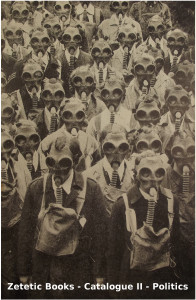In a burst of Stakhanovite production, Catalogue II – Politics and some economics – is now available.

Well we will soon be off to the York Book Fair, the biggest in the UK and one of the biggest in the world. We are on the first floor at stand 194 (there are somewhere in the region of two hundred and twenty stands), so feel free to come and visit us. Our new catalogue will be available to pick up
Interesting piece by Oliver Burkeman in the Guardian about unread books in your library – read it here – I particularly like the argument presented by Nassim Taleb that your library “should contain ‘as much of what you do not know’ as your finances allow”.
A cartoon by Tom Gauld which expresses many of the feelings you may have about the books in your library is below…
Buenos Aires has the highest number of bookshops per person than any other city in the world – as well as probably the most beautiful bookshop in the world
El Ateneo Grand Splendid bookshop (and eleven others!)
Disappointing from the point of view of the main collecting focus here at ZHQ, but I did buy some useful and attractive reference books at the PBFA fair, all on bookbinding, including a set of books that I have wanted for quite some time , Beraldi’s La Reliure Du XIX Siecle, published in 1895, limited to two hundred and ninety five copies, in four volumes, each with lovely illustrations.
It is an essential reference for nineteenth century French bookbindings and this copy came in an attractive binding by S. David (it is signed at the foot of the spine), though I haven’t been able to find out anything about him/her so far…
I particularly like the small black leather onlaid ‘book’
Footnote:
Initially S. David was unknown to us – he was S.[alvador] David (1859-1929), the son of Bernard David, a noted binder who had worked for Gruel and employed some of the best finishers available at the time. A few of his bindings are illustrated in Uzanne’s La Reliure Moderne and one appears in the book Fine and Historic Bookbindings From the Folger Shakespeare Library
Salvador took over from his father in 1890
Another example of a sombre binding (though strictly speaking a semi-sombre binding as it has a gilt roll to inner edges), this one with a panel design, on an interesting book, Sturt’s Common Prayer.
Sturt’s Common Prayer is engraved throughout (it was actually engraved on silver plates), with a volvelle on page five to ‘find all the moveable Sundays in the year’.
Sturt was apprenticed to White, himself a pupil of Loggan’s, and was well known for his miniature work, “it was said that he could engrave the creed on a silver penny, a claim amply reinforced by his best-known works: engraved versions of the Book of Common Prayer and of Laurence Howell’s The Orthodox Communicant, published respectively by subscription in 1717 and 1721. The first of these books, executed on 188 silver plates adorned with borders and vignettes, had a frontispiece portrait of King George I, the lines for which were composed of the creed, the Lord’s prayer, the ten commandments, a prayer for the royal family, and Psalm 21, all inscribed in minute characters” [See picture below] (ODNB)